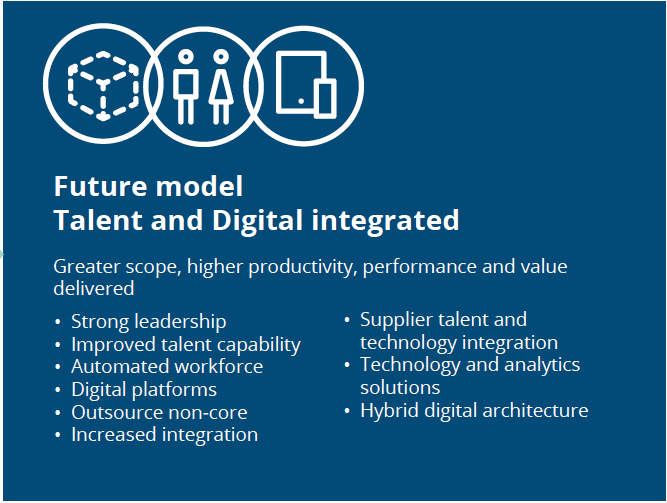Technology is linear.
As time passes, our knowledge and experience as business professionals grows deeper, and our technology grows more powerful.
There is no turning back. Technology’s existence is one straight line, heading towards the future, and we’re just enjoying the ride. Those who dare to not just be passengers, but to partake in the technological revolution, will reap the benefits.
Locating an inflection point — between business competence and technological capability — is the next step for true digital transformation in all areas of the business value chain.
Procurement as a function must, too, work towards locating compatible technological resources in order to evolve.
Strategic sourcing, spend analysis, cost efficiency, bidding, supplier collaboration, supplier evaluation and scoring, RFIs, RFPs, RFQs and more… there are a plethora of functions within procurement that can greatly benefit from integration of intelligent business solutions.
As technology progresses with time, functions must adapt over time.
Cognitive procurement is the nearest ‘goal’ procurement thought-leaders have located for the future of digital procurement and workflow automation. But, as technology still has a ‘ways to progress in the fields of Blockchain, AI, RPA, ML, NLP, and Chatbots, we have to try and meet technology where it exists.
This is an age of technological independence, and API-driven innovation, breeding procurement technologies that are more agile, scalable, integrate-able and more customizable than ever before. This is the age of smarter solutions.
This is the age of User-Enabled Procurement.
The Death of On-Premise
Traditional software models are rather slow-moving beasts in comparison to modern day’s more nimble solutions.
Implementation, user-friendliness, scalability and agility have been major focuses of software vendors in the past years, and this has created the boom of SaaS platforms.
But why does this all matter so much?
Well… as stated above, technology is linear, and that means that data is becoming more complex by the day. Methods for utilizing that data, in-turn, must become more intelligent. The capabilities of SaaS and cloud-based software solutions will continue to have a more explosive growth pattern because they are easily deployed across globally functioning teams. And, as we all know, globalization ain’t no joke.

But, don’t just take it from me. The proof is in the numbers:
In the Western European market, “IDC forecasts a CAGR of 16.3% for SaaS deployment models to 2021, with on-premises solutions having a CAGR of 1.9% in the same period” (Stratis 2017).
This means, SaaS deployment rates will occur 857% more than the deployment of on-premise software throughout the next 4 years in Western Europe.
It’s rather apparent that the supply chain management market has accepted a shift in the method for implementing software solutions. The lengthy integration, and required consultancy of on-premise software models has been flushed out by the fleet-footed onboarding of SaaS solutions. Start-to-finish, some cloud-based procurement solutions can be up and running within a global procurement network within days or weeks; rather than months or years.
The death of on-premise solutions isn’t really a choice, as much as an involuntary shift. There is a need to take back control of our data, and procurement professionals are preparing to take action.
Becoming the User
In order to take back our data, and to start utilizing procurement data sets to an advantage, procurement teams need to — first — take back their software.
As explained above, an involuntary shift has occurred in the nature of software deployment.
With new software comes a new methodology of usage. This shift in methodology of software delivery requires a shift in the mindset of procurement professionals:
To achieve User-Enabled Procurement, one must dare to be the User.
Procurement software vendors are working towards the realization of user-centered procurement. Quality solutions should be, and are, created with UI (User Interface) & UX (User Experience) in focus. A software user’s ability to function within the interface of a solution will be indicative of that user’s success.
“This is particularly true if the usability of a software product is critical to its success, as in the case of self-service systems destined to be used by large numbers of employees with minimal training” (Hocko 2010).
And, isn’t a wide-scaled implementation with minimal training the goal of all procurement teams adopting software solutions?
When UI/UX is a main focus of the software vendor, it can make for simplification of tasks. This is where procurement orgs can see a true ROI on becoming the user of intelligent solutions that are easy to use; time-saved completing daily tasks and consolidation of payroll by creating a user internally rather than outsourcing that competency.
Check this article on how Early Technological Adopters More Often Are Successful.
A New Kind of User
Generation after generation is becoming savvier when it comes to utilizing technology.
Allowing the younger generations of procurement professionals to apply their innate technological savvy and centralize themselves as users of touch-enabled solutions could increase productivity within procurement activities. Millenials and Generation Z have been playing with these kinds of applications since the day they could sit upright.
Within this fact lie two underlying prejudices that are a continuous barrier to the adoption of user-enabled procurement.
1. Procurement solutions shouldn’t be deduced to ‘gamification’, because procurement is much more complex that that, according to hesitant CIOs and CPOs (Krieger 2018).
2. Trusting younger associates with something a senior-stakeholder might not truly understand is riddled with risk.
Luckily, just like technology itself, an evolution is under way.
CPOs (Chief Procurement Officers) have begun to shift their thinking, and are now becoming some of the biggest advocates for an enhanced digital procurement strategy. Creating a top-down culture, and entrusting in younger associates/talents to utilize their technologically-wired brains can serve as a huge advantage for the development of an innovative procurement function.
According to the 2017 CPO Survey by Deloitte, 87% of CPOs-polled agreed that talent is the greatest factor in driving procurement performance (Deloitte 2017).
As you can see in the image below, many of the attributes these CPOs look for in new talent are parallel to traditional business savvy, but there is also a strong demand on technological competency.

Virginie Vast, Head of cognitive procurement & digital sourcing at Vodafone, has stated when speaking of digital transformation, “30% of digital transformation is tools (technology), 70% is people”.
Becoming the Decision-Maker
Now that we’ve taken back our solutions and are firing on all cylinders, we need to take a step back.
It’s time to get strategic.
Unlocking user-enabled procurement is just the first step in having a successful digital procurement strategy. Being the central user of a solution creates a new type of agile decision-maker. Certainly, managers, directors, and c-suite will continue to have the final say in questions that impact cost or spend, but the real decision maker is the data.
Considering that procurement is a nuanced function, unique from organization-to-organization, successful user-enabled procurement requires a specification of business-critical focus areas. In order to dive in head on, initial critical-thinking and planning is required to ensure that the utilization of digital tools will create desirable results and address procurement KPIs.
Just because SaaS solution providers have created a new method for software deployment, doesn’t mean that they can’t help consult with strategic questions before the onboarding!
In fact, most solution providers will offer abilities for customization within functionality or reporting, in order to please a customer’s wants/needs. This is the beauty of user-enabled procurement; the total-cost-of-ownership is reduced by software vendors taking on the bulk of costs for development, consultancy, customer success and customer requests.
Typically, requests for customization a welcomed modus operandi in user/solution provider collaboration. Solution providers are able to keep the customer happy, at reduced costs for the user. And, and the same time, they’re able to gain deeper insight into the needs of potential customers/existing customers. Putting them in a position to better serve their community of users, rather than one specific account.
Unlocking the potential for customization, and individuality, creates a quality of data that will be more specific to a procurement organization’s requirements. Uniquely generated analytics and reports allow procurement teams to be more certain in their data-driven decision making, without breaking the bank to develop on-premise/internal software solutions.
So…
Are you ready to join the era of User-Enabled Procurement?
Until next week.












